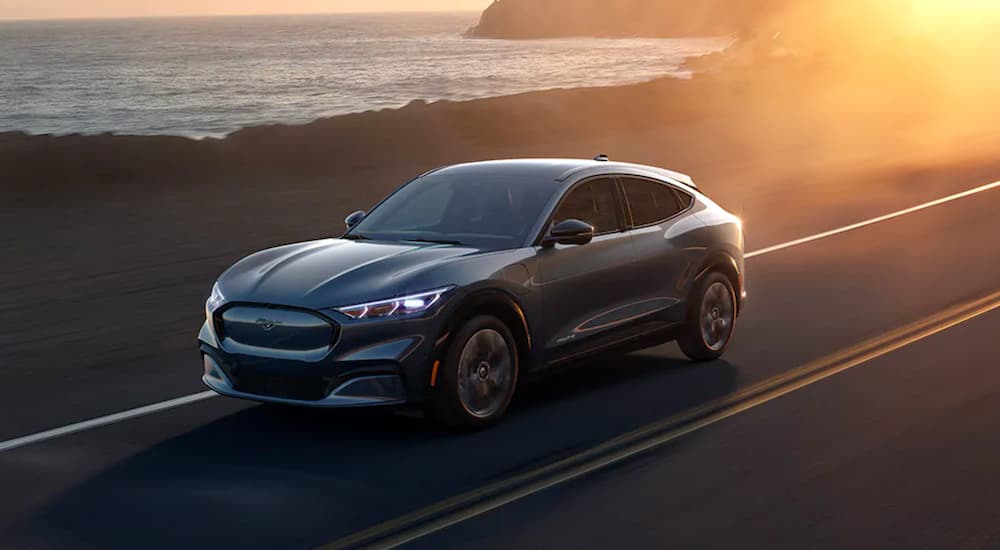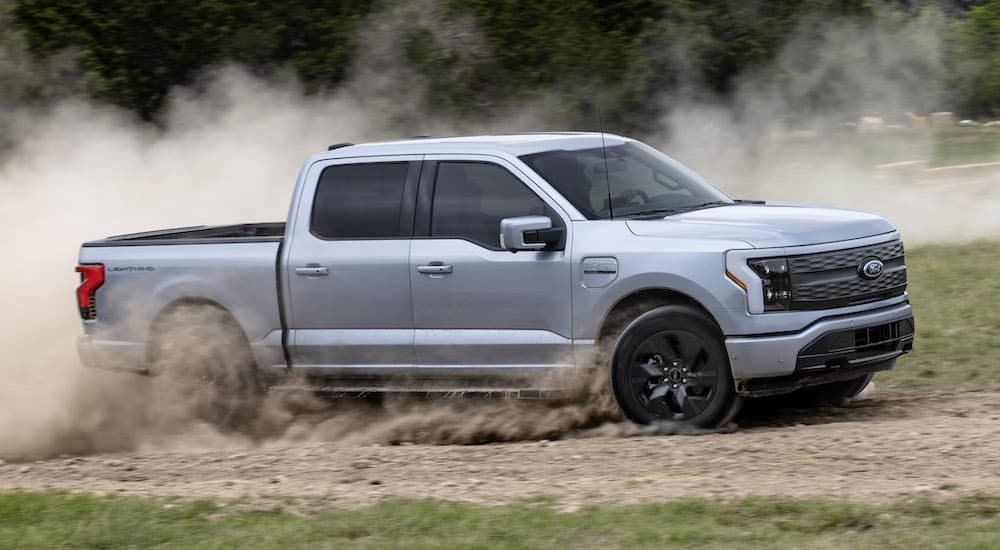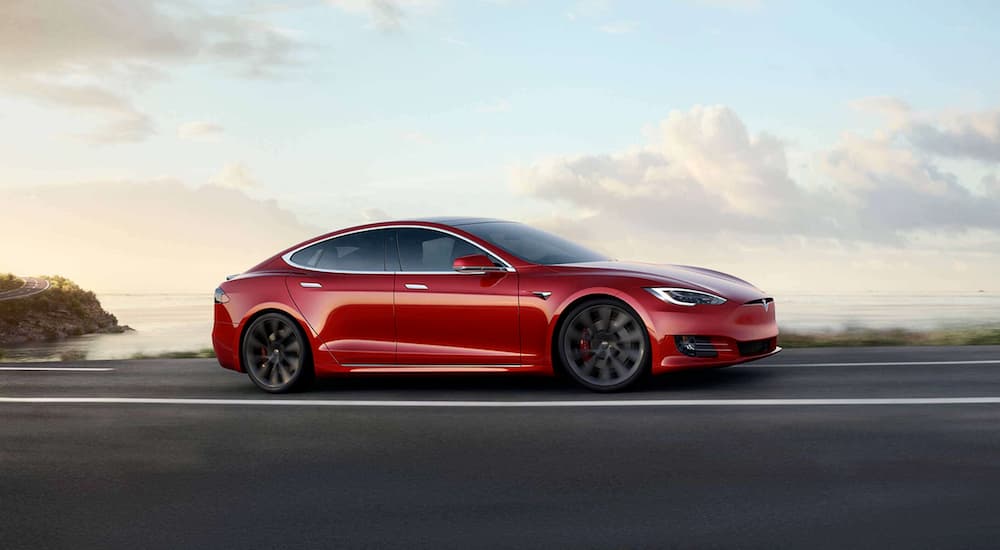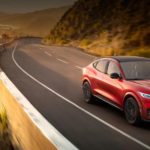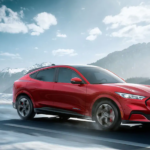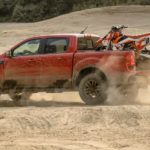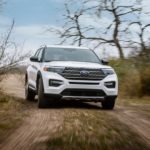If you’re like many drivers, new tech developments within the automotive industry may intrigue you, especially when it comes to hands-free driving capabilities. This relatively new feature is popping up all over the industry, with giants like Ford and Chevy taking on newcomers like Tesla, offering their unique spin on semi-autonomous driving. Several news outlets have recently announced that Ford’s BlueCruise technology has secured the top spot in Consumer Report’s ADAS (Advanced Driver Assistance Systems) test, which put various systems through a rigorous course to see how they stacked up against each other. Ford surpassed its main rival, Chevy, and its Super Cruise tech to take the top spot, but most notably, Tesla, one of the biggest up-and-coming automakers, fell to seventh place. This is a big deal for the respected Ford brand since Tesla is touted as being one of the most innovative and tech-forward automakers on the planet.
Passing by your local Ford dealer, you may wonder which vehicles on the lot are armed with some of the best semi-autonomous driving tech in the industry. From the Mustang Mach-E to the iconic F-150, electrified Lightning to the Expedition, Ford is loading up its vehicles with this groundbreaking tech. The biggest question is; although BlueCruise scored the highest in one testing event, is it really better than Tesla’s famous Autopilot technology? We weigh in on each system, getting down to the nuts and bolts of each to see which semi-autonomous driving experience is the best in the business.
About Ford BlueCruise
BlueCruise pairs Adaptive Cruise Control, which adjusts to the speed of traffic to keep you moving forward safely, with Stop-and-Go and Lane Centering capabilities to keep you securely in your lane, braking and accelerating accordingly. The system also utilizes Speed Sign Recognition to ensure that you’re following the rules of the road at all times. Put all of these advanced features together, and you’ve got a vehicle that maneuvers through traffic with ease and adjusts to changes in the journey, all without your hands being on the wheel. Vehicles armed with BlueCruise technology can travel over 130,000 miles of Blue Zones throughout the continent, which have been pre-mapped and tested to ensure your safety and the quality of the ride. Once in a Blue Zone, blue lighting on the instrument panel will illuminate, signaling that the vehicle is safe to engage in hands-free driving.
Ford BlueCruise’s Most Notable Features
So, what makes Ford’s BlueCruise technology such a winner? Well, you’ll find that the system isn’t just easy to use and ultra-convenient; it’s also extremely safe, with extra precautions in place to ensure one of the safest rides on the road. Here are some of the most notable features of this system that have drivers hooked.
Driver-Facing Camera
You may be wondering how exactly a vehicle can tell if you’re really paying attention when your hands aren’t even on the wheel. Wouldn’t it be easy to just launch into BlueCruise, climb into the backseat, and take a nap after a long day at work? Well, that won’t happen in a Ford vehicle because all BlueCruise vehicles are armed with a driver-facing camera, which monitors your gaze to ensure that your eyes remain firmly on the road ahead. If the vehicle detects that the driver isn’t paying ample attention to what’s going on on the roadway, it will disengage BlueCruise, and the driver must take over their driving duties. There’s no funny business happening inside a BlueCruise vehicle; Ford makes sure of this.
Predictive Speed Assist
Sometimes, the road ahead gets a bit windy, and you may wonder, is a BlueCruise vehicle able to tackle the twists and turns of the road? Absolutely! With Predictive Speed Assist, vehicles equipped with BlueCruise 1.2 adjust their speed to safely take on a tight curve without the driver having to intervene. There won’t be any worrying when a BlueCruise vehicle takes on windy mountain roads.
Lane Positioning Tech
Whether a BlueCruise vehicle needs to change lanes or shift away from vehicles in an adjacent lane, they can do so with advanced features in the BlueCruise system. Just a simple tap of the turn signal, and your vehicle will safely switch lanes for you. When it senses that a neighboring vehicle is inching too close to you, it effortlessly shifts away without you having to lift a finger.
About Tesla Autopilot
Tesla vehicles are equipped with what’s called Autopilot, a hands-free experience, utilizing eight external cameras to monitor road changes and deliver a safe and convenient ride. There are a variety of levels of this system, which include Autopilot, Enhanced Autopilot, and Full Self Driving Capability. Autopilot utilizes Traffic-Aware Cruise Control to safely stay with the flow of traffic, as well as Autosteer, which steers the vehicle for you. Enhanced Autopilot allows drivers to switch lanes, parallel park, and navigate more complex environments without the driver’s help. Finally, Full Self Driving Capability utilizes traffic and stop sign technology to speed up, slow down, make full stops, and more, while an Autosteer feature for use in urban areas is making its way down the pipeline soon.
Tesla Autopilot’s Most Notable Features
Tesla is known for designing some of the most advanced vehicles on the road, and one look at any Tesla will most likely have you gawking in its direction. Although it seems like Autopilot has all of its bases covered, some concerns have arisen in the industry, especially regarding the safety of this system. Take a look at some of its most notable features and see where these concerns begin to pop up.
Steering Wheel Nag
Ford’s BlueCruise tech monitors the driver’s attention via a driver-facing camera. This ensures that their eyes are glued to the road so that the vehicle remains in complete control, even when the driver isn’t actually operating it. Tesla, on the other hand, requires drivers to touch the steering wheel every so often to ensure that they’re still paying attention to the road.
Have you ever lost focus on work, started staring at your phone, and just moved your mouse around so that your computer didn’t go to sleep? That’s about the same as Steering Wheel Nag. What’s worse is that drivers have gotten smart, rigging a system where an object in the vehicle remains in contact with the steering wheel while the driver takes a siesta in the backseat. What would you do if you witnessed this out on the open road?
Smart Summon
Forgot where you parked your car? No worries, just summon it, and it’ll come to you. This may work with Fido at the dog park, but travelers aren’t quite sure they want a vehicle hurtling toward them on its way to find its faithful owner. The good thing is that it’s only meant for use in private parking lots or driveways. We have a feeling that’s not going to stop some drivers from putting it to the test in the Home Depot parking lot. Who else always forgets where they park when they go there?
The Verdict
Although Tesla is pretty cool and all, especially since you’re able to control your vehicle when you’re not even in it, it raises some concerns about the safety of the hands-free driving system. The cool features seem to do more harm than good, which places a seed of doubt into the minds of many everyday travelers. The biggest advantage of BlueCruise is that the system monitors drivers more accurately. There seem to be more precautions put into place because, let’s face it, the technology isn’t quite there yet for us to trust our vehicles to jet around town completely on their own. It seems as though BlueCruise may just be the answer drivers are looking for, especially when they want to harness cutting-edge tech, like semi-autonomous driving, but still want to feel safe on the road.
